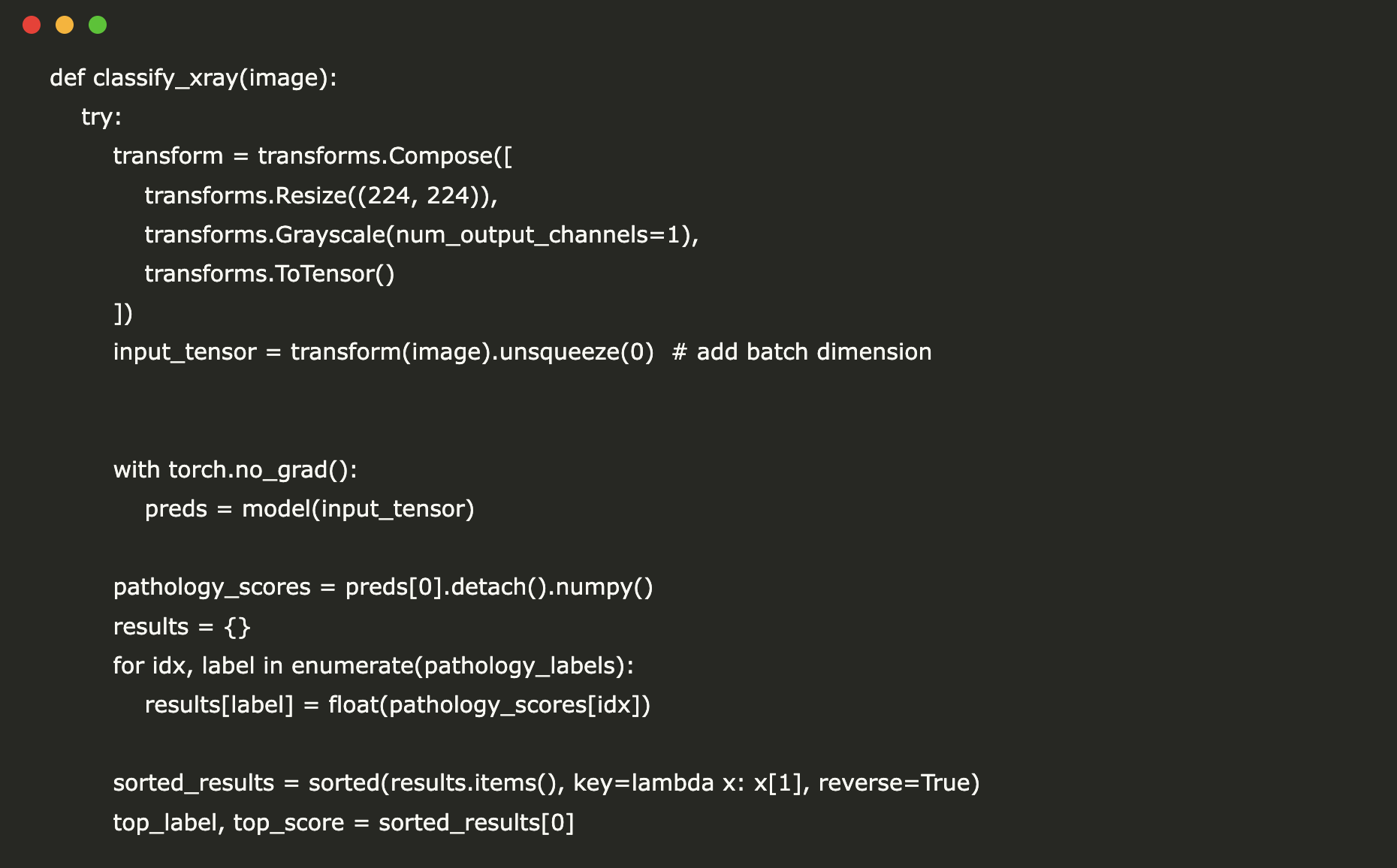How to Build a Prototype X-ray Judgment Tool (Open Source Medical Inference System) Using TorchXRayVision, Gradio, and PyTorch

In this tutorial, we demonstrate how to build a prototype X-ray judgment tool using open-source libraries in Google Colab. By leveraging the power of TorchXRayVision for loading pre-trained DenseNet models and Gradio for creating an interactive user interface, we show how to process and classify chest X-ray images with minimal setup. This notebook guides you through image preprocessing, model inference, and result interpretation, all designed to run seamlessly on Colab without requiring external API keys or logins. Please note that this demo is intended for educational purposes only and should not be used as a substitute for professional clinical diagnosis.
First, we install the torchxrayvision library for X-ray analysis and Gradio to create an interactive interface.
import torchxrayvision as xrv
import torchvision.transforms as transforms
import gradio as gr
We import PyTorch for deep learning operations, TorchXRayVision for X‑ray analysis, torchvision’s transforms for image preprocessing, and Gradio for building an interactive UI.
model.eval()
Then, we load a pre-trained DenseNet model using the “densenet121-res224-all” weights and set it to evaluation mode for inference.
pathology_labels = model.meta[“labels”]
print(“Retrieved pathology labels from model.meta.”)
except Exception as e:
print(“Could not retrieve labels from model.meta. Using fallback labels.”)
pathology_labels = [
“Atelectasis”, “Cardiomegaly”, “Consolidation”, “Edema”,
“Emphysema”, “Fibrosis”, “Hernia”, “Infiltration”, “Mass”,
“Nodule”, “Pleural Effusion”, “Pneumonia”, “Pneumothorax”, “No Finding”
]
Now, we attempt to retrieve pathology labels from the model’s metadata and fall back to a predefined list if the retrieval fails.
try:
transform = transforms.Compose([
transforms.Resize((224, 224)),
transforms.Grayscale(num_output_channels=1),
transforms.ToTensor()
])
input_tensor = transform(image).unsqueeze(0) # add batch dimension
with torch.no_grad():
preds = model(input_tensor)
pathology_scores = preds[0].detach().numpy()
results = {}
for idx, label in enumerate(pathology_labels):
results[label] = float(pathology_scores[idx])
sorted_results = sorted(results.items(), key=lambda x: x[1], reverse=True)
top_label, top_score = sorted_results[0]
judgement = (
f”Prediction: {top_label} (score: {top_score:.2f})nn”
f”Full Scores:n{results}”
)
return judgement
except Exception as e:
return f”Error during inference: {str(e)}”
Here, with this function, we preprocess an input X-ray image, run inference using the pre-trained model, extract pathology scores, and return a formatted summary of the top prediction and all scores while handling errors gracefully.
fn=classify_xray,
inputs=gr.Image(type=”pil”),
outputs=”text”,
title=”X-ray Judgement Tool (Prototype)”,
description=(
“Upload a chest X-ray image to receive a classification judgement. ”
“This demo is for educational purposes only and is not intended for clinical use.”
)
)
iface.launch()
Finally, we build and launch a Gradio interface that lets users upload a chest X-ray image. The classify_xray function processes the image to output a diagnostic judgment.
Gradio Interface for the tool
Through this tutorial, we’ve explored the development of an interactive X-ray judgment tool that integrates advanced deep learning techniques with a user-friendly interface. Despite the inherent limitations, such as the model not being fine-tuned for clinical diagnostics, this prototype serves as a valuable starting point for experimenting with medical imaging applications. We encourage you to build upon this foundation, considering the importance of rigorous validation and adherence to medical standards for real-world use.
Here is the Colab Notebook. Also, don’t forget to follow us on Twitter and join our Telegram Channel and LinkedIn Group. Don’t Forget to join our 85k+ ML SubReddit.
Asif Razzaq is the CEO of Marktechpost Media Inc.. As a visionary entrepreneur and engineer, Asif is committed to harnessing the potential of Artificial Intelligence for social good. His most recent endeavor is the launch of an Artificial Intelligence Media Platform, Marktechpost, which stands out for its in-depth coverage of machine learning and deep learning news that is both technically sound and easily understandable by a wide audience. The platform boasts of over 2 million monthly views, illustrating its popularity among audiences.


